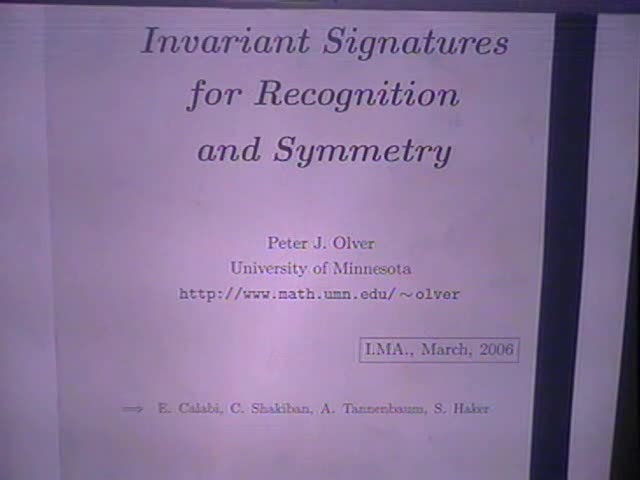Abstract
The mathematical foundations of invariant signatures for object
recognition and symmetry detection are based on the Cartan theory of
moving frames and its more recent extensions developed with a series of
students and collaborators. The moving frame calculus leads to
mathematically rigorous differential invariant signatures for curves,
surfaces, and moving objects. The theory is readily adapted to the
design of noise-resistant alternatives based on joint (or
semi-)differential invariants and purely algebraic joint invariants.
Such signatures can be effectively used in the detection of exact and
approximate symmetries, as well as recognition and reconstruction of
partially occluded objects. Moving frames can also be employed to
design symmetry-preserving numerical approximations to the required
differential and joint differential invariants.
